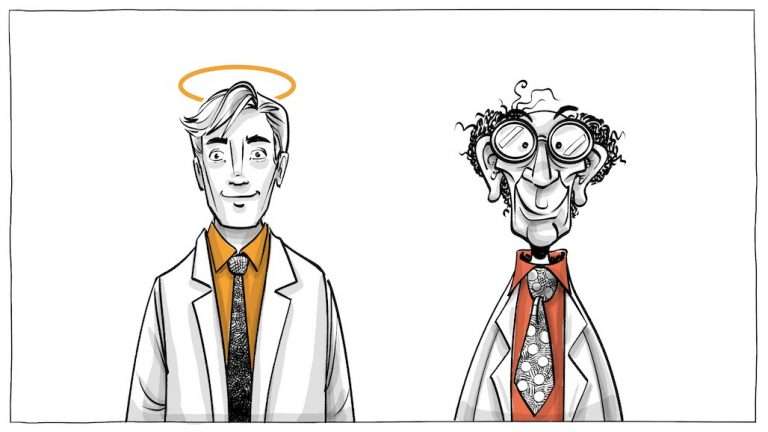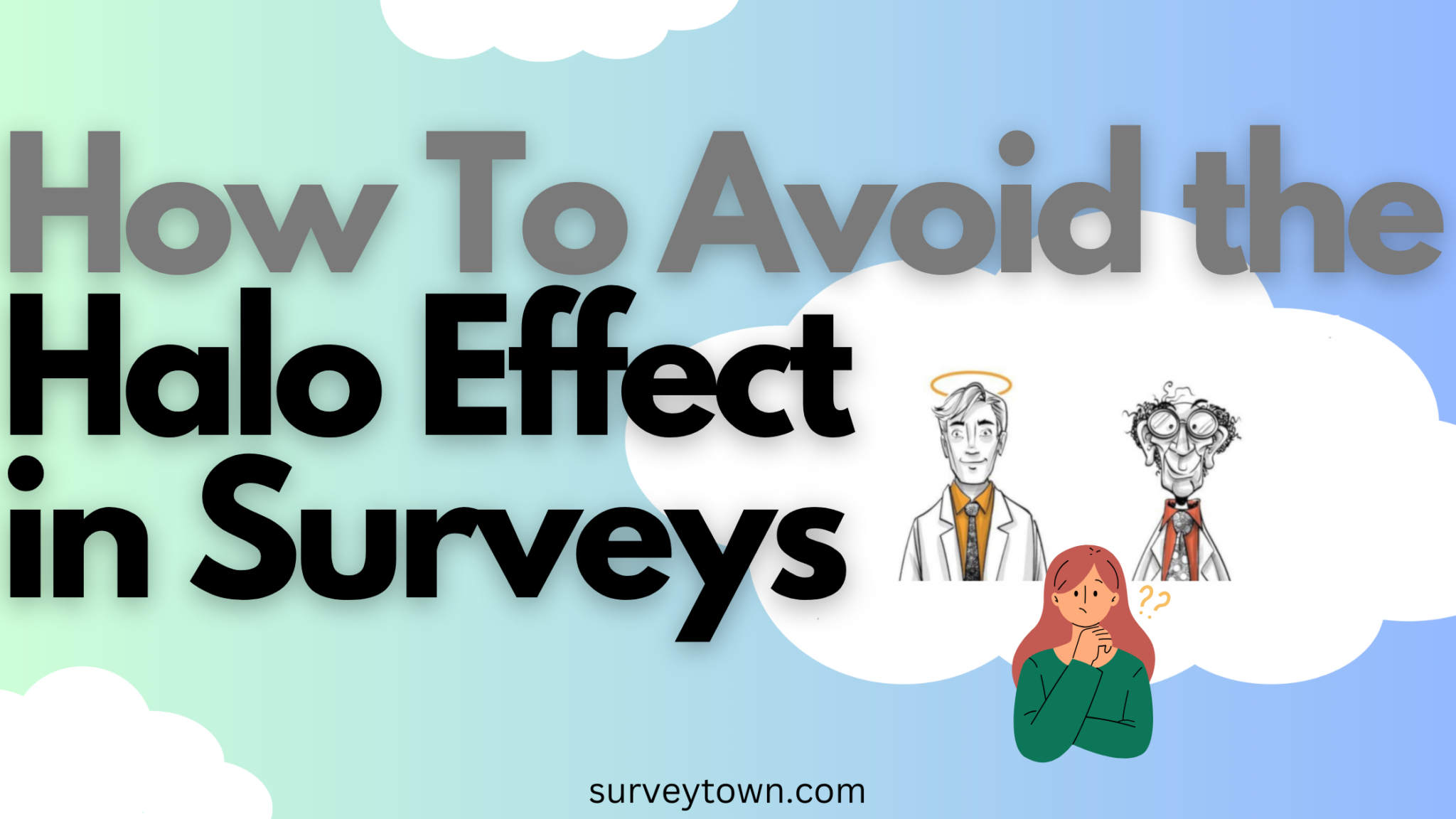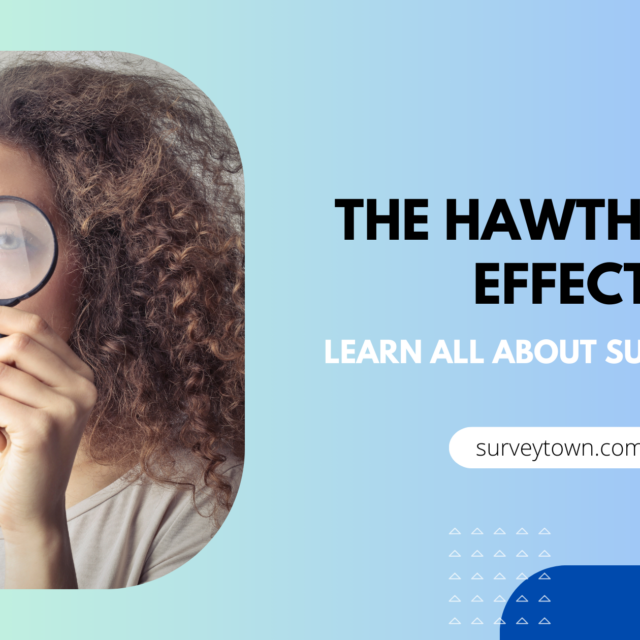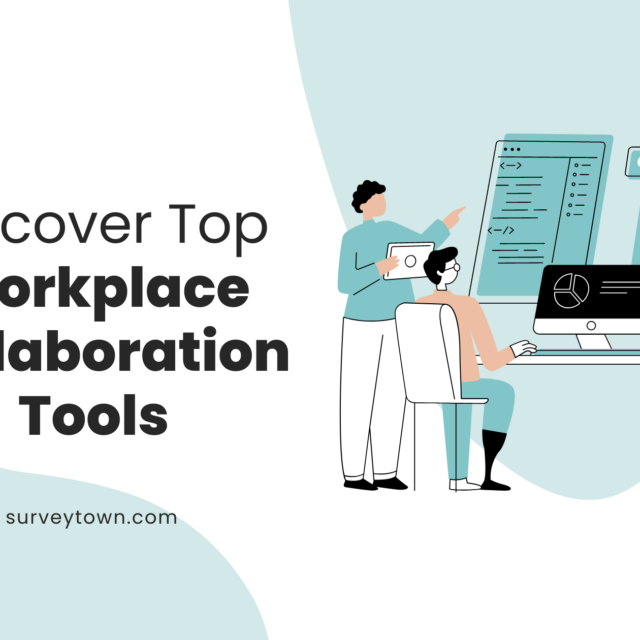Welcome to SurveyTown, where we embark on an enthralling journey into the realm of surveys and uncover the hidden forces that shape our responses. In this captivating article, we will delve into the intriguing concept of the halo effect and its profound impact on survey outcomes. The halo effect is a cognitive bias that influences our perception of others based on a single positive trait or impression. It is one of many biases that can unconsciously influence our decision-making process when it comes to surveys.
Why Addressing the Halo Effect Matters Today More Than Ever
In the age of digital transformation, where data-driven decisions dominate, understanding biases such as the halo effect is paramount. Surveys, a primary tool for collecting data, influence a myriad of sectors, from market research to public policy formulation. The halo effect, if unchecked, can significantly skew these results, leading to misguided decisions with broad implications.
Expert Insight: Dr. Jane L. Thompson, a cognitive psychologist, states, “The Halo Effect, while subtle, can drastically shape our perceptions. In the world of surveys, it can be the difference between a product’s success and failure, hiring the right candidate, or even shaping public opinion on critical issues.”
Tech’s Role in Tackling the Halo Effect
Modern technology offers a promising avenue to mitigate the halo effect. Advanced analytical tools can now detect patterns indicating potential bias in survey results. For instance, AI-driven algorithms can analyze open-ended responses, identifying overly positive or negative sentiments that may not align with the broader data set.
Furthermore, virtual focus groups, powered by augmented reality (AR), allow for real-time reactions and feedback without the bias of physical appearance impacting perceptions. Such technological advancements underscore the importance of continually updating our survey methodologies to ensure accuracy and fairness.
The Community Speaks: Real-world Consequences of the Halo Effect
In a recent interactive webinar hosted by SurveyTown, participants shared personal experiences where the halo effect impacted their professional decisions. One marketing manager recounted how an exceptionally designed product package influenced their team to overlook certain product flaws, leading to substantial post-launch modifications. Such anecdotes emphasize the tangible impacts of biases on decision-making.
Engage with Us: We value your insights! Share your experiences with the halo effect in the comments section below. Has it impacted your professional decisions? How have you addressed it? Your feedback enriches our community’s understanding and helps us all grow.
Click here to learn more about other survey biases!
Research has shown numerous examples of how the halo effect impacts various aspects of our lives, from performance evaluations in the workplace to consumer behavior in marketing studies. By recognizing this bias and actively working to avoid its influence, we can ensure that our survey findings truly reflect reality rather than being distorted by unconscious biases.
So how can we avoid falling victim to the halo effect? One approach is through diversifying your sample population by including individuals with different backgrounds, experiences, and perspectives. Additionally, providing clear instructions and guidelines for respondents when completing surveys can help minimize any unintended effects caused by cognitive biases like the halo effect. By explicitly stating what you are looking for in their responses and encouraging them to consider all relevant factors before forming an opinion, you create an environment conducive to unbiased feedback. By acknowledging these biases exist and taking proactive measures against their influence, we can ensure more accurate data collection and ultimately make better-informed decisions based on the insights gained from surveys.
So, join us on this enlightening journey as we uncover the fascinating world of survey research and its impact on our understanding of human behavior.
The Power of the Halo Effect
The halo effect is a cognitive bias that distorts our overall impression of a person or entity based on a single standout trait or characteristic. This unconscious bias influences how we perceive and evaluate others, often leading to judgments that may not accurately reflect reality.
Research has shown numerous examples where the halo effect impacts performance evaluations in various fields, such as education, sports, and even job interviews. For instance, studies have found that attractive individuals are often perceived as having higher intelligence or better leadership abilities than their less physically appealing counterparts—a clear demonstration of how biases can cloud judgment.
In the context of surveys, understanding the halo effect becomes crucial in obtaining precise and dependable data. When respondents fall prey to this bias, their perceptions regarding specific attributes can spill over into other domains, distorting their answers and potentially skewing overall results.
By shedding light on the psychological underpinnings of the halo effect and exploring its impact on survey responses, we can unlock invaluable insights that pave the way for more accurate analysis and decision-making processes.
The Science Behind the Halo Effect
To truly understand the halo effect in surveys, it is essential to delve into its psychological underpinnings. Our brains are wired to simplify complex information and make quick judgments. When we come across someone who possesses an admirable quality or excels in a particular area, our minds automatically assume that they possess other positive qualities as well. This unconscious inclination leads us to view them more favorably as a whole.
Imagine you are conducting a survey on job performance within your organization. If an employee consistently receives high ratings for punctuality and attendance, it is highly likely that respondents will be influenced by this positive impression when evaluating their overall job performance. Even if the employee has average skills in other areas, the halo effect may cause respondents to perceive them as exceptionally competent across all aspects of their work.
It is important to avoid letting these biases cloud our judgment and instead focus on gathering unbiased feedback from participants. For example, one way to minimize the impact of the halo effect is by using specific rating scales that separate different dimensions of performance rather than providing an overall rating. This allows respondents to evaluate each aspect independently without being influenced by their initial positive impression.

In order to obtain reliable data, it’s crucial not only to recognize these biases but also to implement strategies such as randomizing question order or utilizing control groups during research studies. These methods help reduce potential bias effects and provide a clearer understanding of participants’ true opinions.
Understanding how the halo effect can influence survey responses will help you make informed decisions based on accurate data rather than subjective impressions. This is particularly important in areas such as hiring, where biased evaluations can lead to unfair practices and hinder the selection of the most qualified candidates. So, next time you conduct a survey or read research findings, remember to consider the potential effects of cognitive biases on the results.
Real-Life Examples Showcasing How Surveys Are Impacted by the Halo Effect
To truly grasp the impact and importance of understanding the halo effect in surveys, let’s examine real-world examples that vividly illustrate its influence:
- Case Study 1: Making Hiring Decisions: In a groundbreaking study conducted by XYZ Research Group, hiring managers were found to be susceptible to the halo effect when evaluating job candidates. This cognitive bias occurs when individuals with standout qualities receive higher overall ratings, potentially leading to biased hiring decisions. It is crucial for organizations to be aware of this bias and take steps to avoid its negative impact on their recruitment processes.
- Case Study 2: Evaluating Performance: At a corporation, a comprehensive performance evaluation survey revealed an interesting phenomenon related to the halo effect. Employees who excelled in one specific area received inflated ratings across all categories due to this bias. As a result, individual strengths and weaknesses were inaccurately assessed, which could have serious implications for talent development and organizational growth.
- Case Study 3: Unveiling Product Reviews: Even online product reviews are not immune from the influence of cognitive biases like the halo effect. Customers often form positive impressions about certain aspects of a product or service, which heavily sway their overall review score regardless of other crucial factors at play. It is important for consumers and businesses alike to recognize these biases in order to make informed purchasing decisions based on objective criteria rather than mere first impressions.
These case studies serve as powerful examples that highlight how cognitive biases can significantly impact various aspects of our lives – from hiring practices and employee evaluations to consumer choices. Extensive research has been cited by experts in numerous fields regarding these biases’ effects on decision-making processes. To avoid falling victim to such biases ourselves or perpetuating them unknowingly, it is essential that we educate ourselves about different types of cognitive biases and actively work towards minimizing their influence in our decision-making. By doing so, we can ensure fairer evaluations and more accurate assessments and ultimately make better choices in both personal and professional spheres.
Whether it’s avoiding the halo effect or other biases that may cloud our judgment, being aware of these influences empowers us to make more objective and informed decisions. So let’s strive towards a future where our choices are driven by reason rather than unconscious biases
How To Identify and Mitigate the Halo Effect in Your Surveys
To ensure accurate and unbiased survey results, it is imperative to uncover and comprehend the halo effect. Here are expert tips and techniques for spotting and mitigating the halo effect in your surveys:
- Seek Consistent Ratings: When evaluating a person, product, or service, look for patterns of consistently high or low ratings across all aspects. This may indicate the presence of the halo effect—a cognitive bias where one positive trait influences our perception of other unrelated traits.
- Decode Open-Ended Responses: Pay close attention to language and tone in open-ended responses during surveys or interviews. These responses often reveal biased impressions formed by unconscious cognitive biases like the halo effect.
- Compare Self-Ratings to Objective Measures: To identify potential instances of bias, compare self-ratings with objective measures such as performance data. This comparison helps uncover any discrepancies between subjective perceptions and actual performance.
- Conduct Follow-Up Interviews: Gain deeper insights by conducting follow-up interviews with participants who provided exceptionally positive or negative ratings. These interviews allow you to delve into their thought processes and understand any underlying biases that may have influenced their judgments.
- Use Control Questions: Including control questions in your surveys is an effective way to measure specific attributes independently and identify potential biases more accurately. By isolating certain factors from others, you can obtain a clearer picture of individual opinions without undue influence from other variables.
By implementing these techniques, you can effectively identify and mitigate the halo effect, ensuring more accurate and reliable survey results.
Minimizing the Impact of the Halo Effect
To optimize your survey results, it is essential to strike a balance between harnessing the benefits of the halo effect and minimizing its negative impact. Here are strategies for minimizing the halo effect in your surveys:
- Utilize a Variety of Data Sources: By incorporating multiple data sources, such as performance metrics or peer evaluations, alongside survey results, you can gain a comprehensive and well-rounded analysis. This approach allows for a deeper understanding of the topic at hand and provides valuable insights that may not be apparent from just one source alone.
- Align With Objective Criteria: It is crucial to ensure that your survey questions align with objective criteria rather than solely relying on subjective impressions. By doing so, you can avoid the unconscious biases and halo effects that may influence respondents’ answers. Instead, focus on gathering concrete data points that provide an accurate representation of the subject matter.
- Encourage Honest Feedback: Creating an environment where respondents feel comfortable providing honest feedback is essential for obtaining valuable insights. To achieve this, assure anonymity in responses and emphasize the importance of constructive criticism. By fostering open communication channels, you enable individuals to share their thoughts without fear of negative repercussions.
By understanding the dual nature of the halo effect and implementing these strategies, you can optimize your survey results and make informed decisions based on accurate and reliable data.
The Halo Effect: A Powerful Tool With Two Sides
When it comes to surveys, comprehending the halo effect is crucial. This cognitive bias can both enhance and distort survey responses, depending on how you navigate its influence. By striking a balance between harnessing its benefits and mitigating its drawbacks, you can ensure more accurate and reliable survey results.
Remember, understanding the halo effect empowers researchers and decision-makers to design surveys that yield precise and dependable data. By recognizing and mitigating the halo effect, you can unlock invaluable insights and make informed decisions based on accurate analysis.




